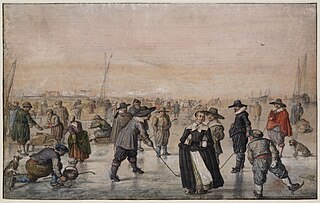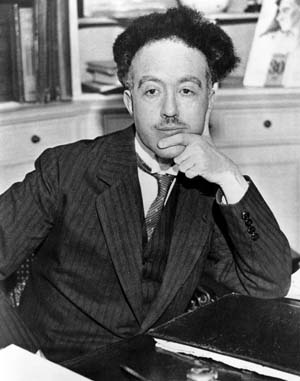Related Research Articles

Marie-Sophie Germain was a French mathematician, physicist, and philosopher. Despite initial opposition from her parents and difficulties presented by society, she gained education from books in her father's library, including ones by Euler, and from correspondence with famous mathematicians such as Lagrange, Legendre, and Gauss. One of the pioneers of elasticity theory, she won the grand prize from the Paris Academy of Sciences for her essay on the subject. Her work on Fermat's Last Theorem provided a foundation for mathematicians exploring the subject for hundreds of years after. Because of prejudice against her sex, she was unable to make a career out of mathematics, but she worked independently throughout her life. Before her death, Gauss had recommended that she be awarded an honorary degree, but that never occurred. On 27 June 1831, she died from breast cancer. At the centenary of her life, a street and a girls’ school were named after her. The Academy of Sciences established the Sophie Germain Prize in her honor.

The 17th century lasted from January 1, 1601 (MDCI), to December 31, 1700 (MDCC). It falls into the early modern period of Europe and in that continent was characterized by the Baroque cultural movement, the latter part of the Spanish Golden Age, the Dutch Golden Age, the French Grand Siècle dominated by Louis XIV, the Scientific Revolution, the world's first public company and megacorporation known as the Dutch East India Company, and according to some historians, the General Crisis.

1665 (MDCLXV) was a common year starting on Thursday of the Gregorian calendar and a common year starting on Sunday of the Julian calendar, the 1665th year of the Common Era (CE) and Anno Domini (AD) designations, the 665th year of the 2nd millennium, the 65th year of the 17th century, and the 6th year of the 1660s decade. As of the start of 1665, the Gregorian calendar was 10 days ahead of the Julian calendar, which remained in localized use until 1923.

Fermat's principle, also known as the principle of least time, is the link between ray optics and wave optics. In its original "strong" form, Fermat's principle states that the path taken by a ray between two given points is the path that can be traveled in the least time. In order to be true in all cases, this statement must be weakened by replacing the "least" time with a time that is "stationary" with respect to variations of the path — so that a deviation in the path causes, at most, a second-order change in the traversal time. To put it loosely, a ray path is surrounded by close paths that can be traversed in very close times. It can be shown that this technical definition corresponds to more intuitive notions of a ray, such as a line of sight or the path of a narrow beam.

Christiaan Huygens, Lord of Zeelhem, was a Dutch mathematician, physicist, engineer, astronomer, and inventor, who is regarded as one of the greatest scientists of all time and a major figure in the Scientific Revolution. In physics, Huygens made groundbreaking contributions in optics and mechanics, while as an astronomer he is chiefly known for his studies of the rings of Saturn and the discovery of its moon Titan. As an engineer and inventor, he improved the design of telescopes and invented the pendulum clock, a breakthrough in timekeeping and the most accurate timekeeper for almost 300 years. An exceptionally talented mathematician and physicist, Huygens was the first to idealize a physical problem by a set of mathematical parameters, and the first to fully mathematize a mechanistic explanation of an unobservable physical phenomenon. For these reasons, he has been called the first theoretical physicist and one of the founders of modern mathematical physics.

Adrien-Marie Legendre was a French mathematician who made numerous contributions to mathematics. Well-known and important concepts such as the Legendre polynomials and Legendre transformation are named after him.

Louis Victor Pierre Raymond, 7th Duc de Broglie was a French physicist and aristocrat who made groundbreaking contributions to quantum theory. In his 1924 PhD thesis, he postulated the wave nature of electrons and suggested that all matter has wave properties. This concept is known as the de Broglie hypothesis, an example of wave–particle duality, and forms a central part of the theory of quantum mechanics.

Frans van Schooten Jr. also rendered as Franciscus van Schooten was a Dutch mathematician who is most known for popularizing the analytic geometry of René Descartes.

Claude Gaspar Bachet Sieur de Méziriac was a French mathematician and poet born in Bourg-en-Bresse, at that time belonging to Duchy of Savoy. He wrote Problèmes plaisans et délectables qui se font par les nombres, Les éléments arithmétiques, and a Latin translation of the Arithmetica of Diophantus. He also discovered means of solving indeterminate equations using continued fractions, a method of constructing magic squares, and a proof of Bézout's identity.
The year 1749 in science and technology involved some significant events.
The year 1736 in science and technology involved some significant events.
The year 1630 in science and technology involved some significant events.
The year 1640 in science and technology involved some significant events.
The year 1636 in science and technology involved some significant events.

Eugène Charles Catalan was a French and Belgian mathematician who worked on continued fractions, descriptive geometry, number theory and combinatorics. His notable contributions included discovering a periodic minimal surface in the space ; stating the famous Catalan's conjecture, which was eventually proved in 2002; and, introducing the Catalan number to solve a combinatorial problem.

Paul Tannery was a French mathematician and historian of mathematics. He was the older brother of mathematician Jules Tannery, to whose Notions Mathématiques he contributed an historical chapter. Though Tannery's career was in the tobacco industry, he devoted his evenings and his life to the study of mathematicians and mathematical development.

The University of Orléans is a French university, in the Academy of Orléans and Tours. As of July 2015 it is a member of the regional university association Leonardo da Vinci consolidated University.

Pierre de Fermat was a French mathematician who is given credit for early developments that led to infinitesimal calculus, including his technique of adequality. In particular, he is recognized for his discovery of an original method of finding the greatest and the smallest ordinates of curved lines, which is analogous to that of differential calculus, then unknown, and his research into number theory. He made notable contributions to analytic geometry, probability, and optics. He is best known for his Fermat's principle for light propagation and his Fermat's Last Theorem in number theory, which he described in a note at the margin of a copy of Diophantus' Arithmetica. He was also a lawyer at the Parlement of Toulouse, France.

In number theory, Fermat's Last Theorem states that no three positive integers a, b, and c satisfy the equation an + bn = cn for any integer value of n greater than 2. The cases n = 1 and n = 2 have been known since antiquity to have infinitely many solutions.
Cornelis de Waard was a Dutch mathematics teacher and a historian who specialized in researching science and mathematics of the seventeenth century.
References
- ↑ Crilly, Tony (2007). 50 Mathematical Ideas you really need to know. London: Quercus. p. 68. ISBN 978-1-84724-008-8.